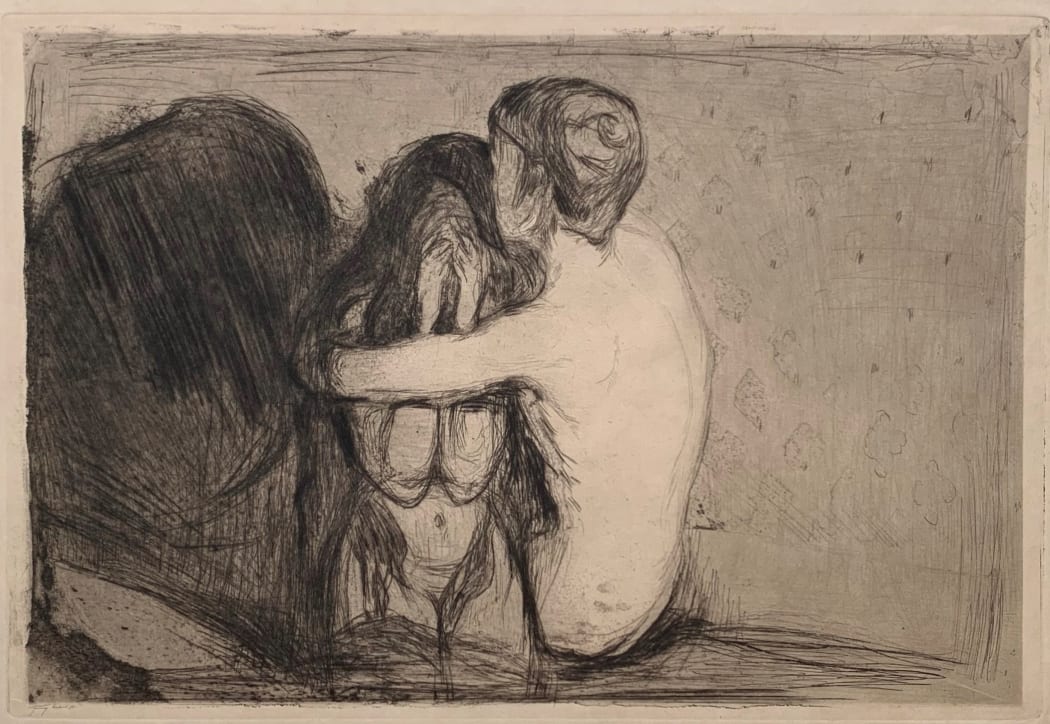
These past several weeks we’ve been talking about Picasso’s early days of printmaking. But let's switch gears now. Last month, after over a decade of delays and setbacks, a museum dedicated to Edvard Munch opened in Oslo. Called “MUNCH,” the 13-story building is one of the largest single-artist museums in the world, holding around 28,000 of the artist’s works.
Edvard Munch lived to be 80 years old. To say he left behind quite the legacy would be an understatement. It’s almost too easy though, to image a fate in which his life would have ended much sooner. Marred by a tragic childhood, he fit the bill for the classic “tortured artist.” There’s no doubt he would have been considered a prolific figure in modern art, even if he’d left behind a smaller body of work. But, it just so happens Munch’s first foray into printmaking shares a number of similarities with Picasso’s. And if the artist had never made it to the point where he started to make prints, it’s unclear how renowned he would be today, as prints became a major part of his oeuvre. At the time, it was radical to make art about feelings and the soul. But that was part of Munch’s genius: an innate ability to express emotions, and his willingness to boldly experiment with mediums and techniques in order to find fresh ways to convey his feelings.
Munch didn’t get into printmaking until his early 30s. He had already been working as an artist for a decade yet hadn’t achieved major success from his paintings. He moved to Berlin in 1892, as Kristiania wasn’t much of a cultural hub at the time. Just as Picasso struggled financially when he first moved to Paris, Munch’s early days in Berlin were spent poor and hungry.*
Things started to change after Munch put on a small show of his paintings. His work was deemed inappropriate though, and the show was shut down after only a week. A week, however, turned out to be long enough to put him on the map with Berlin’s avant-garde. As his popularity grew, Munch wanted his work to reach a larger number of people— a quest that led him to discover printmaking, and all it had to offer.
Unlike Picasso, though— whose use of the new medium coincided with his use of new subjects and a transition from his blue period to his rose period— Munch didn’t shake his angst and isolation. Instead, he utilized printmaking techniques to rework his motifs and express the emotional atmosphere in new ways.
Trost (Consolation) (W6), a drypoint created in 1894, is a good example of this. Dark shading connects the two lovers to each other, but a distinct line still separates them. While the man is mostly surrounded by light, a dark figure looms over the woman. And just like that, we experience that raw human element; the delicate gloom that exists in so many of Munch’s depictions of love and relationship.** This theme of consolation is one Munch would keep coming back to, a man embracing a woman amidst anguish. The melancholia of these images is unsettling, but the title suggests something more revealing. Consoling is, after all, to alleviate a sense of loss or grief. There is even the notion of consolation as medical intervention; the concept that "Before and after fundamental medicine offers diagnoses, drugs, and surgery to those who suffer, it should offer consolation” and “This comfort may be one person's promise not to abandon another. Consolation may render loss more bearable by inviting some shift in belief about the point of living a life that includes suffering. Thus consolation implies a period of transition: a preparation for a time when the present suffering will have turned.”***
Thinking about consolation alongside the personal grief that fueled the artist’s art, is it possible that even in his darkest moments of despair, he could find an element of human comfort somewhere inside? Could it even be part of the reason he was able to make it through, living his life into old age? Munch said himself, “Naturalism, Impressionism, Symbolism are movements that have become means of expressing a single concern, the human.”
Printmaking was the medium that allowed Munch to distribute his work to the widest audience; work that expressed his sorrow, his fear, his joy, his pain… in essence, his humanity. A humanity that spoke to the people, because they shared in and related to it. And they continue to feel connected to those works today. Enough so to fill a 13 story museum with them.
